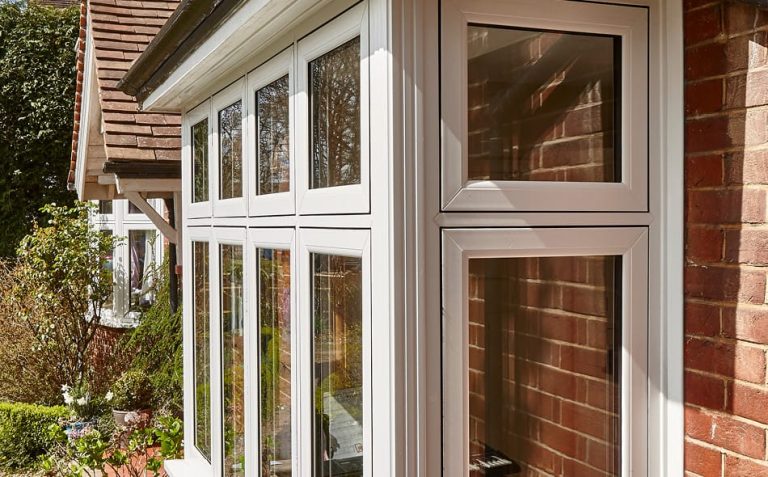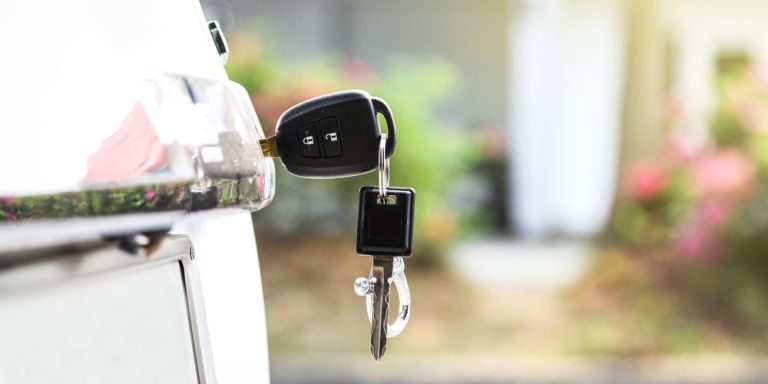How to Conduct a Risk Assessment – Keytek
How to Conduct a Risk Assessment: Locksmith Edition
Every company has a duty to ensure that their workplace, employees, contractors and members of the public are protected from potential harm. With so many health and safety rules and regulations to be followed it can often be confusing, especially trying to figure out what might and what might not apply to you as a Locksmith. Risk assessments are vital and every kind of business up and down the UK and required to undertake them by law.
What is a Risk Assessment?
The Oxford English Dictionary defines risk assessment to be ‘a systematic process of evaluating the potential risks that may be involved in a projected activity or undertaking.’ Simply put, a risk assessment is something you must do as a Locksmith to ensure no one or anything comes to harm whilst you are at work’.
How to Conduct a Risk Assessment
To conduct a risk assessment you must go through a step-by-step process to ensure you manage the risks that are caused by hazards in your workplace. The Health and Safety Executive (HSE) pinpoint these steps as follows:
-
Identify Hazards
As a Locksmith you will find yourself in many different environments to complete your work including, your office (if you have one), your work van and your customers’ homes. The things you should look out for are:
- How people work, this includes yourself, colleagues and customers
- How your equipment is used
- What chemicals and substances you may use
- What is a safe and unsafe way to go about your Locksmith duties
- The state of your premises including your Locksmith van
- Stress is a big thing to be aware of as a Locksmith as many of your customers may feel stressed in their situation especially if they have been locked out of their home or recently burgled.
-
Assess the Risks
Once you have identified the hazards you may encounter as a Locksmith the next step is to identify how serious these risks are and the likelihood of someone becoming harmed. For the assessing part of your risk assessment you need to include:
- Who might be harmed and how
- What you are already doing to help prevent and control the risks
- What actions you may need to undertake to ensure you control the risks
- Who is responsible to carry out the risk prevention actions
- When the risk prevention actions are needed by
-
Control the Risks
Once you have identified and assessed the risks you may encounter as a Locksmith you should discover from these findings whether you can:
- Remove the hazard altogether
- Find a way to control the risk so that harm is least likely to happen
If you have identified a hazard you will need to think about ways you could control the situation further to prevent any harm such as:
- Redesigning the job
- Replacing your tools
- Implementing practical measures to ensure your work is done as safely as possible
- Wearing PPE where necessary such as goggles for any drilling work
- Further assistance where needed such as on a bailiff job
You will never be able to eliminate all of the risks you encounter as a Locksmith but as long as you do everything “reasonably practicable” as the HSE puts it to protect people from harm as well as balancing your need to control risks also involving your time, money and trouble.
-
Record your Findings
It is vital that if you employ 5 people or more to record your findings to control the risks you have put into place. You will also need to review your findings often but especially when there are changes including staff, your working process or any new tools or substances used.
-
Risk Assessment Template
To help you complete and record your own risk assessments the HSE have provided a template as well as some examples of other businesses to give you some more understanding. Remember, you simply cannot copy another’s risk assessment and put your name on it as this will not be passed by the law.
Find the template here.
-
Be Aware of your Surroundings
Whilst you’re carrying out your risk assessment, it’s important to be aware of your surroundings to ensure you don’t get in the way of anyone else and their reason for being there such as:
- Emergency services
- Colleagues Clients
- Contractors
- The general public
-
You Should Also Remember
When carrying out a risk assessment, the company may require you to do certain things whilst you’re assessing such as wearing safety hats, hi-vis clothing etc to ensure your safety. Whenever conducting a risk assessment, you should not only follow the company’s procedures but also make sure to keep the information relevant and related to Locksmithing only. For example you wouldn’t carry out an assessment and include the potential hazards of the customer’s hair dryer or their pets.
Hazards and Risks
What type of hazards and risks will you find as a Locksmith on site and what is the difference between the two? The main difference between the two is that a hazard is something that can cause potential harm where as a risk on the other hand, is the likelihood of a person being injured or receiving an adverse health effect due to a hazard being realised. Almost anything may be a hazard, but may or may not become a risk.
Hazards:
- Working up a ladder
- Unstable working area
- Power tools
- Wet floors
Risks:
- Acute or Chronic Pain
- Physical
- Chemical
- Ergonomic
- Radiation
- Psychological
- Biological
Hazards and risks that exist in the Locksmith workplace and the safe working practices which must be followed:
Employers have responsibilities for the health and safety of their employees and any visitors to their premises such as customers, suppliers and the general public. In addition to these duties, there are regulations to deal with particular hazards and for industries where hazards are particularly high. Some safe working practices that employers must keep are:
- Make floors, walkways, stairs & roadways safe to use
- Protect people from falling from height or into dangerous substances
- Store things so they’re unlikely to fall and cause injuries
- Make sure that employees, who work alone, or off-site, can do so safely and healthily
Whilst as an employer/employee, you will have made every attempt to provide a completely safe workplace, accidents do happen and equipment can break. It’s important that you and staff alike are able to remain alert, are able to spot any hazards and understand how to appropriately deal with these situations in order to avoid any issues.
Employees should also be able to safely be aware of their physical state. For example, if you or a member of staff begins to feel excessively stressed, tired or unwell, they should know when to stop working in order to remain safe. This is especially true for those using heavy equipment and machinery.
Dynamic Risk Assessments
A crucial responsibility of all professionals is the ability to conduct risk assessments both dynamic and pre-planned. In addition to that, risk assessments minimise most health and safety risks and hazards to make the learner compliant with the Health & Safety at Work Act 1974. There are several other legislations in place.
Health & Safety at Work etc Act 1974
Also known as HASAWA, employers must protect the health, safety and welfare at work of all their employees as well as other on their premises including temps, casual workers, the self-employed, clients, visitors and the general public.
The Management of Health and Safety at Work Regulations 1999
Places a duty on employers to assess and manage risks to their employees and others arising from work activities.
The Environmental Protection Act 1990
An Act of the Parliament of the United Kingdom that as of 2008 defines, within England and Wales and Scotland, the fundamental structure and authority for waste management and control of emissions into the environment.
Provision and use of work equipment regulations 1998 (PUWER)
Requires that equipment provided for use at work is: suitable for the intended use, safe for use, maintained in a safe condition and inspected to ensure it is correctly installed and does not subsequently deteriorate.
It is important when conducting a risk assessment that anything within the area that you’re working in, is secure and safe so that you can carry out your assessment with confidence.
Premises
You would need to make sure that the area you’re going to work in is structurally secure and safe. In some cases the contractor would provide you with or request that you wear PPE should there be any potential hazards.
Vehicles
Make sure they’re not blocking any access and that they’re parked safely if near the area you need to work in.
Each company will have their own procedures and requirements when it comes to making a dynamic risk assessment on their premises. The information you need to gather will stay the same but the way you go about it may change, for example:
Waste management
This can be different as they may have a selected means of disposing of anything no longer needed whilst on their premises.
Covid-19 Risk Assessment
Since the start of the pandemic it has been vital that each individual and workplace do everything they can to reduce the risk of transmitting the virus. As a Locksmith carrying out your risk assessment you should think about the following:
- Identify how your work could cause a transmission of the virus
- Consider who is going to be at risk, this is especially true when you are entering customers homes as you may not know of any underlying health conditions or their age as people over the age of 60 are more at risk
- Think about exposure levels
- Control the risk by removing work where necessary, such as if a customer reports they have symptoms or by staying at home if you have developed symptoms yourself
To control the virus the government have implemented measures that should be followed until further notice from the government they are:
- Hands: Wash your hands more frequently and for at least 20 seconds. Where you do not have access to soap and water which many Locksmiths will not travelling between customers homes you should carry hand sanitizer with you at all times.
- Face: Wear a mask in public places and inside customer’s homes. Avoid touching your mask once it is on and throw disposable ones in the bin and wash reusable face masks every time you have stopped wearing it for the day.
- Space: Keep to the social distancing rules in place so there is a less likely chance of the virus spreading between yourself, colleagues and customers.
Who is Responsible?
So who is responsible for your own health and safety and that of your colleagues and customers as a Locksmith?
Under health and safety law, the primary responsibility for this is down to your Locksmith employers if you have them. Workers have a duty to take care of their own health and safety and that of others who may be affected by your actions at work. Workers must co-operate with employers and co-workers to help everyone meet their legal requirements which mean you must do your part as well. Here is a rundown of the people responsible:
Owners and employers:
Owners and employers of businesses are primarily responsible – they must implement and oversee the management of health and safety measures. They, or a competent person to whom they’ve assigned the task, must carry out regular risk assessments. These are crucial because they help determine where new safety procedures are needed and whether existing ones are effective.
Managers and supervisors:
They require a thorough understanding of health and safety. They must understand how to carry out their role safely and how to maintain control measures in their workplace. The employer may task them with relaying safety information to staff, which requires management to provide suitable information and training.
Employees:
They need to understand the health and safety risks associated with their work. They need to follow any training they receive and know not to interfere with their workplace’s specific procedures. Furthermore, they must know how to carry out their work activities safely and minimise risks around the premises.
Reporting Risks
As time goes on and things change there may be new risks that you need to factor in, for example a worldwide pandemic, (see our advice on how to factor in Covid-19 into your risk assessment above).
To put it simply, everyone is responsible for health and safety in their workplace. Whether you’re the owner of a business or a staff member working on the shop floor, the law requires you to carry out certain actions to meet health and safety requirements. Fulfilling your duties not only helps protect yourself, but also everyone else you work with.
Acts and Regulations
What are acts and regulations? An Act is something that the Parliament creates as a new law or to make changes to an existing law. Legislation is a law that has been passed by Parliament but it is also sometimes used to describe the act of making a new law. Some acts and regulations you should be aware of as a Locksmith are as follows:
Regulatory Reform (Fire Safety) Order 2005
The order was put in place under the Regulatory Reform Act 2001 and it replaces most fire safety legislation with one simple order. It means that any person who has some level of control in the premises must take responsible steps to reduce the risk from fire and make sure people can safely escape if there is a fire, for example by fitting thumb turn cylinders on an only entry door.
General Data Protection Regulation (GDPR)
The act controls how you and your customer’s personal information are used by organisations, businesses or the government. The act is the UKs implementation of the General Data Protection Regulation (GDPR). It is there to make sure any information given is used fairly, lawfully and transparently.
Health & Safety at Work etc Act 1974
Also known as HASAWA, employers must protect the health, safety and welfare at work of all their employees as well as other on their premises including temps, casual workers, the self-employed, clients, visitors and the general public.
Management of Health & Safety at Work Regulations 1999
The Management of Health and Safety at Work Regulations 1999 places a duty on employers to assess and manage risks to their employees and others arising from work activities.
Safeguarding & Prevent
The purpose of Prevent is to stop people from becoming terrorists or supporting terrorism. “Prevent” includes countering terrorist ideology and challenging those who promote it, supporting individuals who are especially vulnerable to becoming radicalised and working with sectors and institutions where the risk of radicalisation is assessed to be high.
https://www.hse.gov.uk/simple-health-safety/risk/index.htm
https://www.hse.gov.uk/coronavirus/working-safely/risk-assessment.htm




